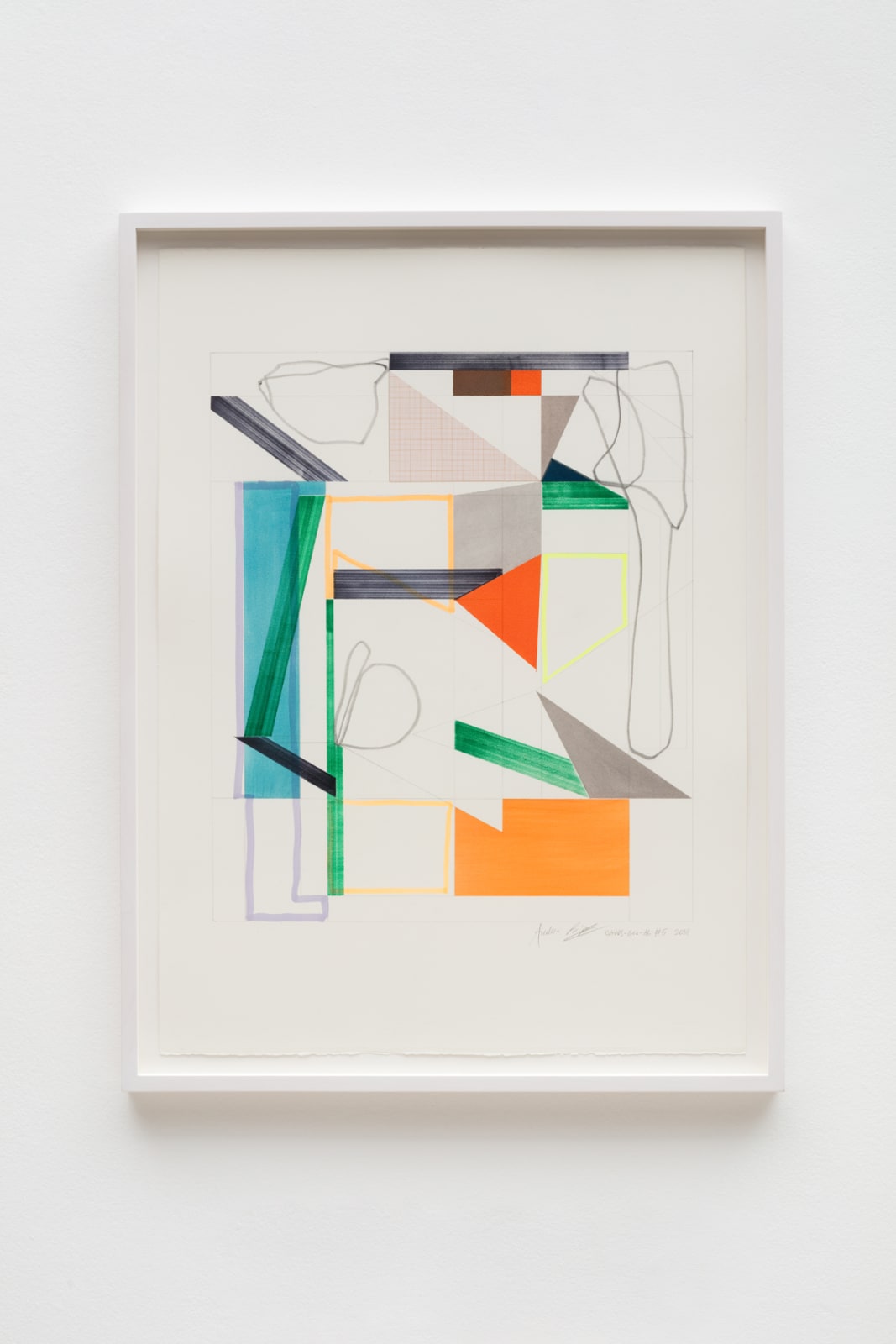
Andrew Bick
OGVDS-GW-AB #5, 2018
Watercolour, marker pen, pencil, and collage on paper
76 x 56 cm
29 7/8 x 22 1/8 in
Framed: 84 x 63 cm
33 1/8 x 24 3/4 in
29 7/8 x 22 1/8 in
Framed: 84 x 63 cm
33 1/8 x 24 3/4 in